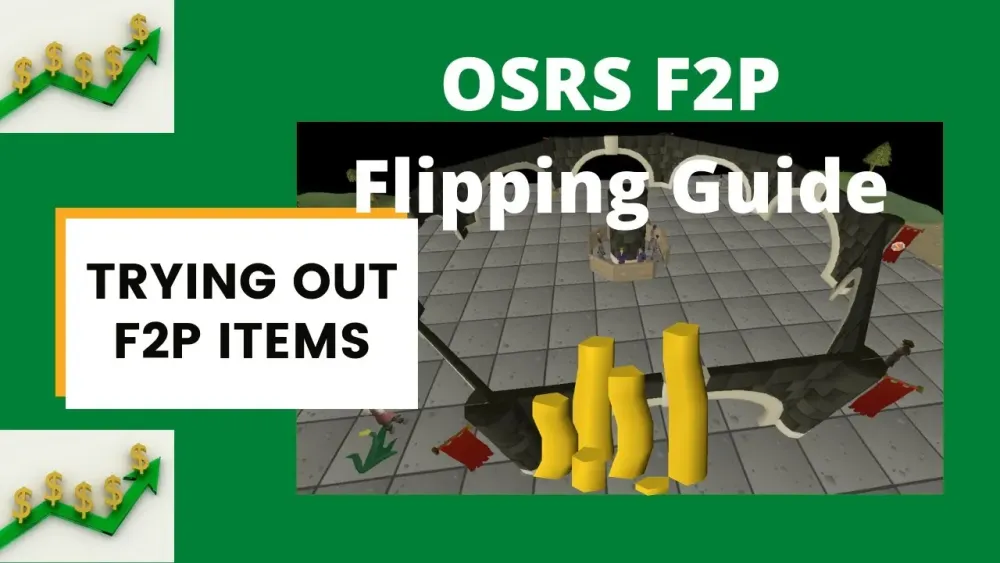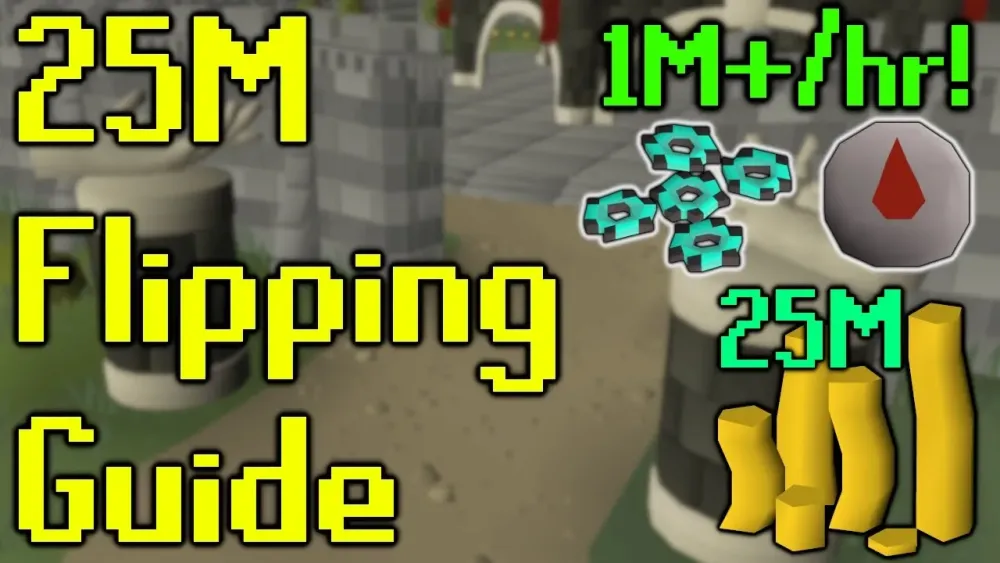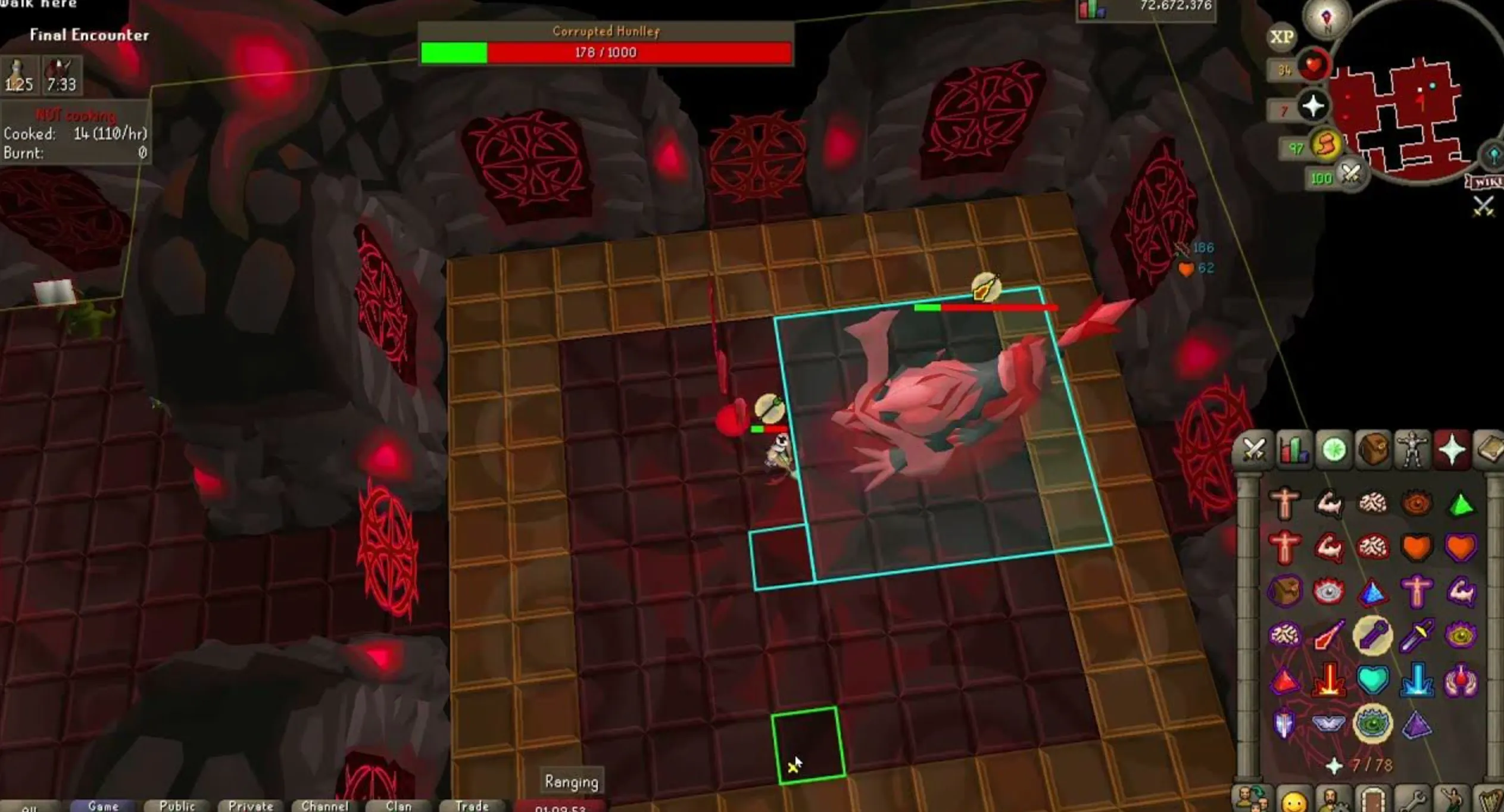Your cart is empty
Ultimate Guide to Flipping Items in OSRS: A Free-to-Play Approach

Flipping items in Old School RuneScape (OSRS) is a popular method for players to generate in-game wealth. By buying low and selling high, players can capitalize on market fluctuations. This guide focuses on a free-to-play approach, providing strategies and insights to help you succeed in the flipping market without spending real money or relying on membership features. Whether you’re a newcomer or a seasoned player looking to refine your skills, mastering the art of flipping can significantly enhance your gaming experience.
The Grand Exchange (GE) is the primary marketplace in OSRS, where players buy and sell items. Located in Varrock, it offers a user-friendly interface for trading, allowing players to set their own prices and observe market trends. To effectively flip items, understanding the Grand Exchange‘s mechanics is crucial.
First, familiarize yourself with the price history of items. The GE provides a price graph for each item, showing historical buy and sell prices. Use this data to identify trends; for example, if an item has been steadily increasing in price, it may be a good candidate for flipping. Conversely, look for items that have recently dropped in price but are likely to rebound soon.
Next, know the different types of items available for flipping. High-demand items like food, potions, and runes typically have more liquidity, meaning they sell quickly and can be flipped reliably. On the other hand, rare items or those with niche markets may take longer to sell but can yield higher profits. Balancing your portfolio with both types can mitigate risks while maximizing profit potential.
Additionally, consider the impact of updates and events on item prices. For instance, during seasonal events or game updates, certain items may experience price spikes. Staying informed about game news can give you an edge in anticipating market movements.
Lastly, patience is key in flipping. Don’t rush to sell an item if you believe its price will rise. Monitor your listings and adjust your prices as necessary to remain competitive. By understanding the Grand Exchange and employing strategic thinking, you can effectively flip items and enhance your wealth in OSRS.
Key Items to Flip in Free-to-Play

When it comes to flipping items in Old School RuneScape (OSRS) as a free-to-play player, knowing which items yield the best profit margins is crucial. Here’s a list of key items that you can focus on:
- Rune Items: Items like Rune Scimitars and Rune Full Helms are in demand due to their effectiveness in combat. They can often be bought at a lower price and sold at a higher price as players seek to upgrade their gear.
- Magic Items: Items such as the Staff of Air and Staff of Fire are popular among magic users. They are relatively cheap to buy and can sell for a decent profit.
- Food and Potions: Items like Lobsters and Saradomin Brews are staples for players looking to heal during combat. The demand often fluctuates, providing ample flipping opportunities.
- Iron and Coal Ores: These materials are essential for smithing and crafting. Players often look for bargains on ores, making them ripe for flipping.
- Runes: Items like Fire Runes and Air Runes are always in demand. They are cheap to buy and can be sold for a profit, especially during peak gaming hours.
By focusing on these items, you can maximize your flipping potential and watch your profits grow.
Tips for Successful Flipping
Flipping items in OSRS can be a rewarding venture, but it requires strategy and patience. Here are some tips to help you succeed:
- Research the Market: Always keep an eye on the Grand Exchange prices. Use tools like the OSRS Wiki or price-check websites to track item trends.
- Understand Supply and Demand: Know what items are in high demand and when. For example, items related to current events or updates often see price spikes.
- Start Small: If you’re new to flipping, start with low-value items to minimize risk. As you gain experience, you can gradually increase your investment.
- Limit Your Buy and Sell Orders: Place reasonable buy and sell orders to avoid overpaying or underselling. Patience can lead to better profits.
- Be Prepared for Fluctuations: Prices can fluctuate rapidly in OSRS. Be ready to adapt your strategy based on market changes.
By following these tips, you’ll be well on your way to mastering the art of flipping in OSRS, making your free-to-play experience profitable and enjoyable!
5. Common Mistakes to Avoid
Flipping items in Old School RuneScape (OSRS) can be a rewarding venture, but it’s essential to steer clear of common pitfalls. Here are some mistakes that many beginners make:
- Ignoring Market Trends: Failing to keep an eye on market trends can lead to poor investment choices. Always check the Grand Exchange for price fluctuations.
- Overextending Your Budget: It’s easy to get carried away and buy too many items. Stick to a budget to avoid unnecessary losses.
- Neglecting to Use Buy/Sell Limits: Each item has a limit on how many can be bought or sold in a 4-hour period. Ignoring these limits can lead to wasted time and cash.
- Not Diversifying Your Portfolio: Putting all your gold into one item can be risky. Diversify by flipping multiple items to spread your risk.
- Getting Impatient: Flipping requires patience. Selling too quickly can mean missing out on potential profits. Wait for the right buyer!
- Failing to Track Your Profits: Keep a log of your flips, including purchase and sale prices. This helps you understand what works and what doesn’t.
By being aware of these pitfalls, you can enhance your flipping experience and increase your chances of making a profit.
6. Advanced Flipping Techniques
Once you’ve mastered the basics of item flipping in OSRS, you may want to explore advanced techniques to maximize your profits. Here are some strategies to consider:
- Utilizing Price Manipulation: Sometimes, you can create a temporary demand for an item by buying it in bulk. This can increase the price, allowing you to sell for a profit.
- Timing Your Sales: Pay attention to player activity. Selling items during peak hours can lead to better prices due to higher demand.
- Flipping Rare Items: Rare items can yield high profits, but they come with risks. Research their price history thoroughly before investing.
- Using the GE Tracker: Tools like GE Tracker can provide valuable insights into market trends, helping you make informed decisions.
- Market Prediction: Learn to predict market trends based on upcoming updates or events in the game. Adjust your flipping strategy accordingly.
- Trading with Friends: Sometimes, trading items with friends can lead to better deals. Consider collaborating with other players to flip items efficiently.
By implementing these advanced techniques, you can elevate your flipping game and potentially see a significant increase in your profits.
7. Tracking Market Trends
Tracking market trends in Old School RuneScape (OSRS) is crucial for anyone serious about flipping items. The Grand Exchange is a bustling marketplace where prices fluctuate based on supply and demand. By understanding these trends, you can make informed decisions that maximize your profits. Here’s how you can effectively track market trends:
- Use Price Tracking Websites: Websites like OSRSBox or GE Tracker provide real-time data on item prices. They often include historical data, allowing you to see how prices have changed over time.
- Follow Community Forums: Engaging with communities on Reddit or the official OSRS forums can provide insights into what items are trending. Players often discuss their flipping experiences and can alert you to market shifts.
- Monitor In-Game Events: Seasonal events or updates can drastically affect market prices. For example, during holiday events, certain items may spike in demand. Keeping an eye on updates from Jagex will help you anticipate these changes.
- Analyze Your Own Transactions: Keep a record of your flips. Note the purchase and sale prices, as well as the time taken for each flip. This will help you identify which items are consistently profitable.
In summary, tracking market trends is not just about being reactive; it’s about being proactive. By utilizing available resources and staying informed, you can make smarter decisions and increase your flipping success in OSRS.
8. Conclusion: Maximizing Your Profits
In conclusion, flipping items in OSRS can be a rewarding venture, especially in the free-to-play realm. By implementing the strategies discussed in this guide, you can maximize your profits and enjoy the thrill of trading. Here are some key takeaways to keep in mind:
- Do Your Research: Before buying any item, take the time to understand market trends and prices. Knowledge is power!
- Start Small: If you’re new to flipping, begin with low-cost items. This minimizes risk while you learn the ropes.
- Diversify Your Portfolio: Don’t put all your eggs in one basket. Flipping a variety of items can help mitigate losses.
- Be Patient: Some items take longer to sell than others. Patience is key in waiting for the right buyer.
- Keep Learning: The OSRS market is dynamic, so always be open to learning from your experiences and adapting your strategies.
By following these tips and remaining vigilant, you’ll be well on your way to becoming a successful flipper in OSRS. Happy trading!

